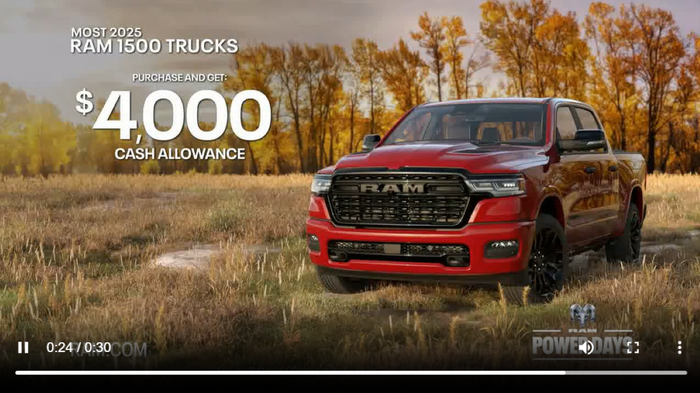GM’s HiPer Strut Rethinks MacPherson Suspension
The goal of HiPer Strut was to make a McPherson-strut design work like the short long-arm setups of rear-wheel-drive vehicles.


CHANTILLY, VA – General Motors Co. adds a new front suspension to the redesigned-for-’10 Buick LaCrosse, virtually eliminating the torque steer inherent to front-wheel-drive vehicles and improving overall drivability.
Called High-Performance Strut, or “HiPer Strut” as GM has branded it, the new setup comes as standard equipment on top-of-range LaCrosse CXS models and arrives at dealers in the coming weeks.
The rollout of HiPer Strut coincides with the launch of LaCrosse models with a 2.4L Ecotec 4-cyl. gasoline direct-injection engine, which received a Ward’s 10 Best Engines nod this year.
So far, the only other GM vehicle to receive HiPer Strut is the high-performance Opel Insignia OPC in Europe. The suspension was added to the OPC eight months ago.
With the Insignia coming to the U.S. later this spring as the new-for-’11 Buick Regal sports sedan, odds favor the high-performance Regal GS show car receiving HiPer Strut when it gets green-lighted for production as expected later this year.
Outside of GM and Ford Motor Co.’s Focus RS in Europe, which the Dearborn, MI-based auto maker markets as “RevoKnuckle,” few auto makers employ this suspension approach due to cost.
For that reason, HiPer Strut will remain on premium vehicles at GM for the near future, says, Jim Federico, chief engineer and vehicle line executive for the LaCrosse.

GM’s High-Performance Strut vs. traditional MacPherson design
“It’s not a cheap part,” he tells Ward’s during test drive for the suspension and new 4-cyl. engine here. “There’s some money in it. We will have to price for it.”
In addition to reducing torque steer, HiPer Strut also is designed to isolate unwanted feedback from bumps and rough surfaces in the roadway, as well as improve steering precision and cornering performance in wet and dry conditions, by keeping more of the tire patch on the roadway.
Federico says the goal of HiPer Strut was to make a McPherson-strut design work like the short long-arm setups of rear-wheel-drive vehicles. It also shows mechanical advancements remain in chassis technology, despite the proliferation of electronic assistance.
HiPer Strut retains the traditional MacPherson-style strut design, but GM reduces the length of the spindle assembly by adding a second ball joint on top of the steering knuckle. The shorter spindle length reduces negative camber, putting more tire rubber on the roadway and greatly reducing torque steer.
The second ball joint also de-couples the steering knuckle from the strut, which helps isolate unwanted feedback from the road.
The lower control arms are then attached to a rigid subframe, which is bolted to the body structure with four isolators to further dampen noise and vibration.

<script type='text/javascript' src='http://static.feedroom.com/affiliate/_common/js/fr_embed.js'></script><div id='flashcontent'></div><script type='text/javascript'>var so = new FlashObject (
">The unique setup also improves the ride quality of larger wheels, such as the 19-in. variety found on the LaCrosse.
Federico says once costs come down, HiPer Strut could be particularly effective on small cars with big wheels – a styling element highly sought after by auto makers.
“It is more costly, it adds more mass, but it gives Buick what it needs,” he says. The extra ball joint, bushings and accompanying hardware add 18-22 lbs. (8-10 kg) to the vehicle.
GM marketers here are unsure how they might treat HiPer Strut in advertising, but it will provide a key selling point for dealers to use against LaCrosse competitors. As such, the feature fits well into GM’s “May the Best Car Win” marketing strategy, which asks consumers to test its vehicles against direct competitors.
Testing a LaCrosse with HiPer Strut against similar models without the technology, the system effectively eliminates torque steer resulting from the 304-hp V-6.
Under full acceleration, a HiPer Strut-equipped LaCrosse exhibits none of the disturbing pulling or tugging sensations in the steering wheel a driver might experience with so much power going to the front wheels.
But with horse trailers and Sunday drivers choking the rural roadways here, it proves more difficult to determine how much better a HiPer Strut-equipped LaCrosse performs under hard cornering.
The same could be said regarding unwanted feedback telegraphing from the pavement through the steering column, especially given the superb job LaCrosse engineers did on the chassis out of the gate.
The system does make the LaCrosse feel pleasantly nimble, although it would be a stretch to say it rivals the handling characteristic of premium rear-drive vehicles.
Federico says HiPer Strut gets added late to the LaCrosse because the new suspension geometry simply was not ready when the vehicle launched in September. GM did all of the work on HiPer Strut in house and the program took 4.5 years.
A more complex geometry than a traditional MacPherson setup, Federico has no worries about its durability. “That’s why it comes late,” he says, referring to the extra hours GM spent validating the system.
“I bet it will outlast standard MacPhersons we have out there, because of the money we put in it; and there is not as much tension in the system – you’re not side loading as much.”
GM also provides time behind the wheel of LaCrosse models equipped with its excellent 2.4L 4-cyl. engine, which the auto maker also added to the car late as a hedge against rising fuel prices.
A bit noisier than its silky smooth 3.6L V-6 stablemate, with 182 hp and 172 lb. ft. (233 Nm) of torque, the 2.4L 4-cyl. moves the LaCrosse along nicely nonethless.
Fuel economy of the smaller engine comes in at 19/30 mpg (12.4-7.8 L/100 km) city/highway, slightly poorer than the 22/32 mpg (10.7-7.4 L/100 km) of the heavier Chevy Equinox that earned the Ward’s Best Engines award.
The LaCrosse also foregoes the “Eco” button GM includes on Equinox and GMC Terrain models to optimize the 2.4L’s fuel economy.
“I want balanced performance, what you would expect in the premium segment,” Federico says of skipping the feature. “If I don’t have to give Buick a button to get 30 mpg, I won’t. I don’t want to be best in segment, I want to be best-balanced.”
Buick expects about 25% of LaCrosse customers to opt for the 4-cyl., probably a conservative estimate given its good manners and starting price of $26,995.
About the Author
You May Also Like





